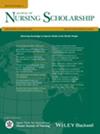Determinants of Prolonged Hospitalization in Children and Adolescents: A Retrospective Observational Study
Abstract
Introduction
Ensuring an appropriate length of stay (LOS) is a primary goal for hospitals, as prolonged LOS poses clinical risks and organizational challenges. Children and adolescents are particularly susceptible to prolonged LOS due to frequent hospitalizations and unique vulnerabilities, including developmental disabilities that may necessitate additional care and monitoring. This study aims to describe the LOS of children and adolescent patients and identify the sociodemographic, organizational, clinical, and nursing care factors contributing to prolonged LOS in this population.
Design
Observational, retrospective, monocentric study.
Methods
A sequential sampling approach was used to select the clinical records of 1538 children and adolescent patients admitted to an Italian university hospital in 2022. The study included all children and adolescents aged 3–18 who were hospitalized for a minimum of 2 days. Patients from outpatient units and those with LOS shorter than 2 days were excluded. The Neonatal Pediatric Professional Assessment Instrument (PAIped) and the Hospital Discharge Register were used to collect sociodemographic, organizational, clinical, and nursing care patient data, including nursing diagnoses (NDs) and nursing actions (NAs). A forward stepwise regression approach was used to identify predictors of LOS among the selected variables. A mediation analysis was conducted to explore the role of nursing predictors, identified in the stepwise regression, as mediators between the number of medical diagnoses and LOS.
Results
Positive correlations between the number of medical diagnoses, NDs, NAs, and LOS were discovered (rs = 0.262, p = < 0.001; rs = 0.114, p = < 0.001; rs = 0.384, p = < 0.001, respectively). Longer hospital stays were associated with an increased number of medical diagnoses, NDs, and NAs. The number of NAs emerged as an independent predictor of LOS (β = 0.516; p < 0.001). Other significant determinants of LOS included a higher number of NAs and medical diagnoses, the presence of a medical DRG category, increased DRG weight, emergency admissions, residency in rural areas, and older age (F = 122.222, p < 0.001, R2 = 0.361, adjusted R2 = 0.358). The mediation analysis showed that the number of medical diagnoses positively predicted the number of NAs (β = 2.774, p < 0.001), which, in turn, positively affected LOS (β = 0.162, p < 0.001). A significant indirect effect of the number of medical diagnoses on LOS through NAs was observed (β = 0.448, 95% CI [0.34, 0.55]), along with a significant direct effect of medical diagnoses on LOS, even with the mediator in the model (β = 0.633, p < 0.001), indicating partial mediation (F = 321.6892; R2 = 0.295; p < 0.001). These results highlight the influence of medical diagnoses on LOS through the mediating role of NAs.
Conclusions
Our study highlights the significant interplay between determinants of LOS in children and adolescent patients, emphasizing the need for targeted interventions, resource planning, and the integration of clinical nursing information systems to enhance care quality and support evidence-based practices.
Clinical Relevance
Optimizing resource distribution and implementing specific interventions for patients at risk of prolonged LOS could help mitigate this negative outcome and enhance the quality of care. Incorporating nursing data into DRG systems could improve reimbursement accuracy and benefit the nursing profession, which may result in better patient outcomes and lower hospital expanses.




 求助内容:
求助内容: 应助结果提醒方式:
应助结果提醒方式:


